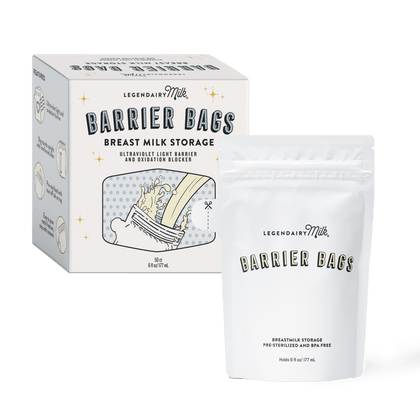Updated 2023
What’s your “magic number” of milk removals needed to maintain or increase your milk production? Check the breast milk production chart above. Your breast storage capacity may be the best indicator of your “magic number.”
Storage capacity is NOT related to breast size. Your breast size is primarily determined by the amount of fatty tissue in your breasts. Your storage capacity is primarily determined by the amount of glandular tissue in your breasts.
From Nancy Mohrbacher, IBCLC—
Question: “I have a 6-week-old and just returned to work. I pump once every 3 hours and am pumping more than enough milk for my baby. But I am fearful of pumping less. Given my son’s eating routine is still getting established and will likely change still, how do I determine my ‘magic number?’”
Answer: “I suggest you begin by thinking back to your maternity leave, assuming you were breastfeeding exclusively and your baby was thriving. On average, how many times every 24 hours did your baby breastfeed? As a starting point, consider this your “magic number.” For example, if the answer is 8 (which seems to be average), assume that to keep your milk production steady long-term you will need to continue to drain your breasts well at least 8 times each day. If you’re pumping 3 times each workday, this means you’ll need to breastfeed 5 times when you and your baby are together. (This will be much easier if 2 of these breastfeedings include one just before leaving your baby for work and another as soon as you and your baby are reunited again.)
Keep your eye on the number of breastfeedings outside your work hours. Many of the employed breastfeeding mothers I talk to pump often enough at work, but as the months pass, the number of breastfeedings outside of work gradually decreases. It’s not just how many times you pump at work that determines your milk production. More important is the number of breast drainings every 24 hours and how this total compares to your “magic number.”



